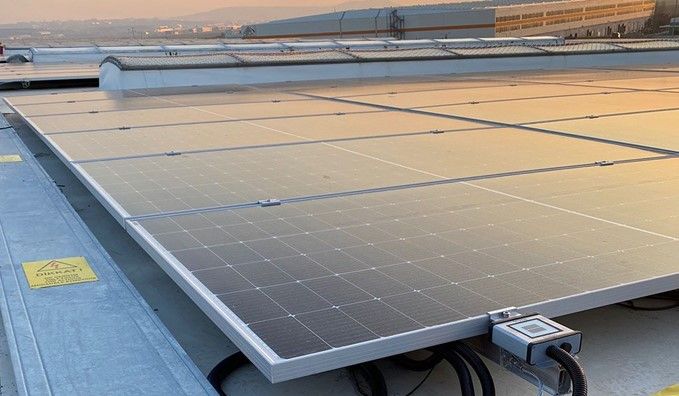In order to optimize the performance of PV plants, it is crucial to have accurate and reliable irradiance data. This is where irradiance sensors come in. These specialized sensors measure the intensity of solar radiation and provide important data to help PV plant operators measure and improve their energy output.
What is Irradiance Sensor?
Irradiance sensors are devices that measure the amount of sunlight that falls on a specific surface in a given time period. These sensors are widely used in photovoltaic (PV) plants to measure the amount of solar radiation that is available for conversion into electricity. The data collected by irradiance sensors is critical for the effective operation and maintenance of PV plants. It is used to optimize the performance of PV panels and to ensure that they are operating at their maximum efficiency.
What are the types of Irradiance Sensors?
There are two main types of irradiance sensors in terms of Output Signal: Modbus and Analog.
Irradiance Sensor with Modbus RTU Output
Modbus Irradiance Sensors are Sensors with Digital Output that use Modbus communication protocols, RTU or TCP/IP, to transmit data to the datalogger or SCADA system via a 2-wire RS485 bus. The length of the communication cable between the Modbus Irradiance Sensor and Datalogger can be up to 1200m according to the tests performed by SEVEN R&D team.
SEVEN’s Irradiance Sensors with Modbus RTU Output are compatible with many well-known datalogger brands, and all the Scada-PLC systems supporting Modbus RTU Protocol. SEVEN Irradiance Sensors are SunSpec compliant as well.
SEVEN manufactures different models of Modbus irradiance sensors based on the number of external sensors to be connected. All these models include an internal cell temperature sensor to calculate the temperature-compensated irradiance value.
The following table summarizes the different options SEVEN provides for Modbus Irradiance Sensor Models.
| Item Code | Irradiance Sensor Description |
|---|---|
| 3S-IS | No External Sensor can be connected |
| 3S-IS-1 | 1 input port that allows the connection of Ambient Temperature Sensor or Module Temperature sensor |
| 3S-IS-2 | 2 input ports that allow the connection of Ambient Temperature Sensor or Module Temperature sensor, and Wind Speed sensor |
| 3S-IS-2T | 2 input ports that allow the connection of Ambient Temperature Sensor and Module Temperature sensor |
| 3S-IS-3 | 3 input ports that allow the connection of Ambient Temperature Sensor, Module Temperature Sensor and Wind Speed Sensor |
| 3S-IS-4 | 4 input ports that allows the connection of Ambient Temperature Sensor, Module Temperature Sensor, Wind Speed Sensor, and Wind Direction Sensor or Relative Humidity Sensor |
| 3S-IS-5 | 5 input ports that allows the connection of Ambient Temperature Sensor, Module Temperature Sensor, Wind Speed Sensor, Wind Direction Sensor and Relative Humidity Sensor |
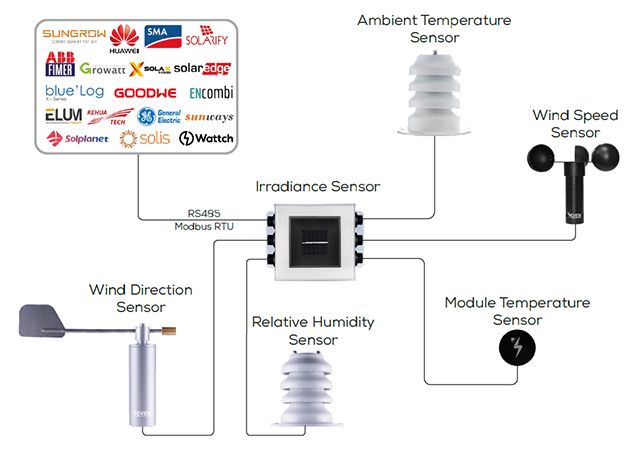
In addition to the above-mentioned models, SEVEN offers also a Low-Cost Model of Irradiance Sensor with Modbus RTU Output which is used in small-scale projects such as residential projects. This model doesn’t include an internal cell temperature sensor, which means that the irradiance value it provides is not temperature-compensated.
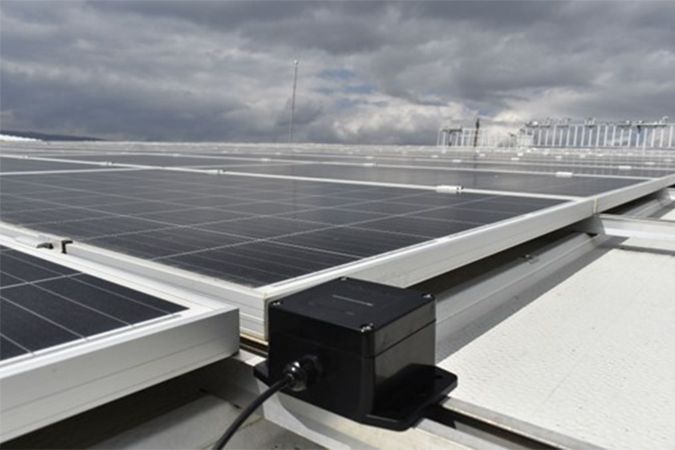
Another model of Modbus Irradiance Sensor can be added to this model range, which is the Dual Orientation Irradiance Sensor. As its name describes, this model is specially designed for Dual Orientation PV Plants, generally rooftop projects. Actually, for the correct calculation of the performance ratio of dual orientations plants, this system must be used as it calculates the average irradiance value as per the number of panels in each direction by using an extra irradiance sensor connected to the master one, which has a custom-designed electronic card.
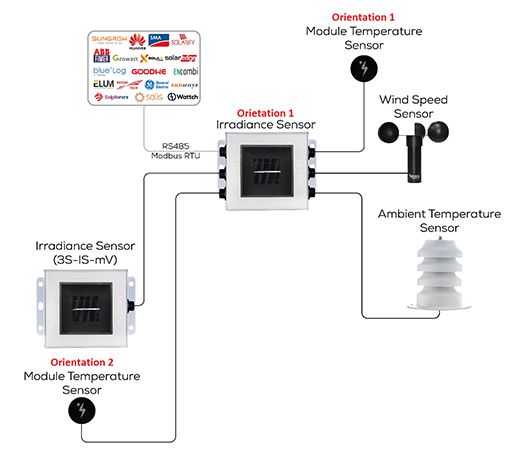
Irradiance Sensor with Analog Output
Analog Irradiance Sensors use analog signals to transmit data to the Datalogger or SCADA System. SEVEN provides two types of Analog Signals for Irradiance Sensor Models; 4-20mA and 0-1,5V. Both models include an internal cell temperature sensor to measure the temperature-compensated irradiance value. While Irradiance Sensor with 4-20mA is used with Dataloggers and SCADA systems having a 4-20mA input port, the Irradiance Sensor with 0-1,5V is used with Dataloggers with 0-1,5V or 0-2V input port, such as SolarEdge.
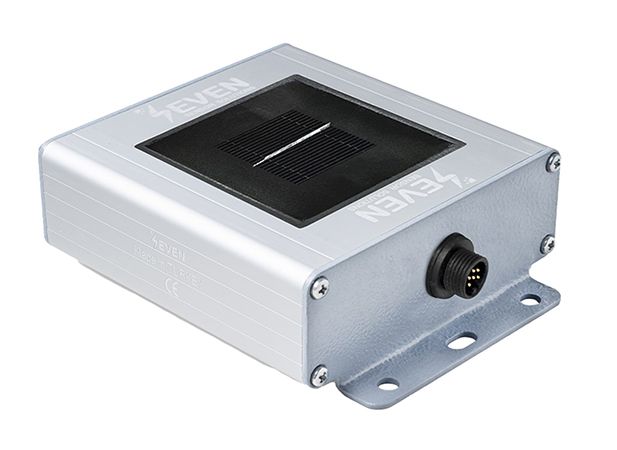
What is the difference between Modbus and Analog Irradiance Sensor
The Irradiance Sensor with Analog Output can transfer the data to the datalogger by using a cable not longer than 20 meters. Otherwise, signal interference may happen which can lead to inaccurate data readings. This is the main reason why users may prefer the Modbus option although it is more expensive than the analog one.
In another hand, whether the output is Modbus or Analog, the accuracy of SEVEN Irradiance Sensor is 1,2%<2%, which means that they all can be used for Class A Monitoring System as per IEC61724-1. In fact, both models are calibrated and tested by using similar procedures; Each sensor is calibrated under Class AAA Sun Simulator as per IEC 60904-2 by using a reference cell calibrated by ISFH-Germany, and before dispatching any irradiance sensor, it is tested under natural sunlight by using a calibrated reference cell from Fraunhofer ISE, Germany.
